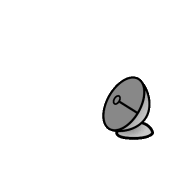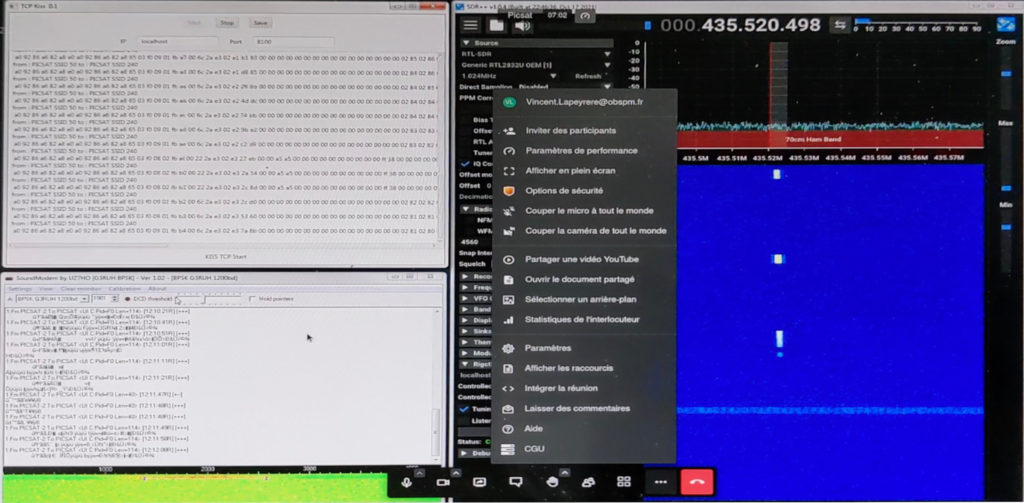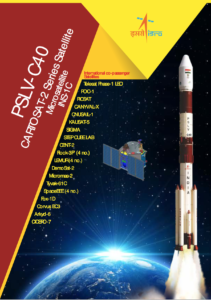
In the afternoon of 21 June, Summer Solstice 2022, our PicSat team member Vincent Lapeyrère received a short email from Emmanuel Bertran at the CNRS Laboratoire Atmosphères, Observations Spatiales near Paris. It reads:
Bonjour Vincent,
C’est vraiment PicSat qui est en vie ?
Cordialement.
Emmanuel BERTRAN
CNRS – LATMOS”
(Hello Vincent. Is it really PicSat that is alive?”)
Emanuel was referring to a tweet posted by radio amateur Vlad Chorney (@EU1SAT) 12 hours earlier :
PicSat ACTIVE !!!
— Vlad Chorney ☮️ (@EU1SAT) June 21, 2022
1k2 BPSK@IamPicSat #PicSat #AmSat #CubeSat pic.twitter.com/grxIjvy2bt
In the hours and days that followed more and more radio amateur from all over the world reported on Twitter that they were picking up PicSat. The little satellite was clearly emitting beacons and the faithful and enthusiastic radio amateur community was picking them up.
We couldn’t believe it at first.
In the past few days since that message, we have been meeting every day online. Vincent, who is the only one of the team currently physically at the Paris Observatory at Meudon, with the e-help from all the others, has been able to reboot and start up the Engineering Model of PicSat, still in the PicSat room. Also, we managed to get the Ground Segment up and running. Mathias, working from Cambridge where he is now a Gavin Boyle Fellow in Exoplanet Science, in collaboration with the IT team at the Paris Observatory swiftly managed to get the PicSat website up and running (https://picsat.obspm.fr/home?locale=en). Through this website amateurs can upload their received data to a Data Base and that is happening as we write this message.
Today, with the help of the team and equipment at LATMOS, we were able to send a first TeleCommand (TC) to the satellite and get reaction! We gave an other try in the evening with L’Electrolab (@Electrolab_Fr). This is very exciting indeed!

After more than four years of silence, we are looking forward to find out all we can about our little PicSat still orbiting the Earth at about 480km altitude. We hope that we can even continue our mission and test the telescope onboard. Even though the purported transit of the planet around Beta Pictoris has past, being able to test this technology will be of great value for future missions.
Stay tuned for more!
On the afternoon (in Paris) of Tuesday 20 March 2018 PicSat suddenly fell silent, after two successful morning passes over Europe. Attempts to re-establish contact have failed, nothing has been heard from the satellite, no sign of life. There was a short-lived hope that PicSat was heard on Friday 30 March by a team at the Morehead State University, but it radio amateur W2RTV was the first to manage to decode the faint signal and turned out to be another satellite (TIGRISAT). Today, Thursday 5 April 2018, the team decided to call mission-closed. A “pot” (French for party / drink) was organised at noon at the Paris Observatory in Meudon. Sylvestre Lacour did a short speech. Four radio amateurs who have been PicSat fans and great supporters joined in via a dedicated Google Hangout. A short video can be seen here. The team will continue to try to understand what went awry, while plans for new projects are being made. PicSat was operational for over 10 weeks. From a technological point of view it has been a success for the LESIA laboratory of the Paris Observatory – PSL, for whom PicSat has been the very first nano-satellite complete built and opereated in-house. This experience will open doors for new nano-satellite projects in the (near) future.

Yesterday 20 March PicSat has suddenly fallen silent, stopping to emit telemetry data.
The mission has been going really well, in spite of a problem with the Attitude Determination and Control System, the solution of which is well under way. 80 radio amateurs from around the globe have been contributing to the mission by receiving and sending the decoded telemetry to the PicSat Data Base. This has proven extremely useful for the team!
The cause of the sudden silence is not known at this point. The last beacon was received from Brazil by Roland Zurmely, PY4ZBZ, yesterday at 13:17:37UTC. If nothing happens in the 72 hours following the last communication, yesterday at 11:20 UTC, then the Watch Dog should be kick starting the satellite and get everything back operational again. Everybody waits and hopes to see this coming Friday 23rd March. In the mean time, the team tries to find out more about what could have caused the sudden stop of communication.
![]()
How hard can it be? I mean, creating an SiDS server and making it available to anyone wishing to send frames in real time? That’s just about parsing an HTTP request, and saving stuff in the database. Piece of cake, really. After all, SiDS just means “Simple Downlink Share”, doesn’t it?
And yet… Bad request forwarding, slow server response time, access right issues, database collisions, we got them all! So, no, it wasn’t easy. And I can’t guarantee that there won’t be a few bugs left out here and there. But so far it seems to be working well enough.
I am glad to announce that the SiDS server for PicSat is now open and ready to process your telemetry frames!
In order to use it, you will need to go under your “profile” tab (don’t have an account on this website? Create one here!), and open your SiDS access by clicking on the button. You can also find the “source” that you should use when sending data. This should be your callsign if you have one, or your user name if not.
More info here: https://picsat.obspm.fr/sids/index?locale=en
A big thank to Mike DK3WN and Viljo ES5PC for their help in debugging that stuff!
P.S.: Sylvain F4GKR’s PicSat decoder PicTalk now allows for automatic forwarding of the data frames to the SiDS server!
P.P.S.: Telemetry forwarder also added to D3KWN’s PicSat Telemetry Decoder and Forwarder.

Busy day today! The CNRS has sent out the press release for the launch. Please find here the French version and the English version.
Launch is on for the early morning of 12 January 2018 at 4h58m local Paris time. It can be followed live on http://webcast.gov.in/live/.
ISRO has made a formal announcement with a nice brochure to it.
Stay tuned!
